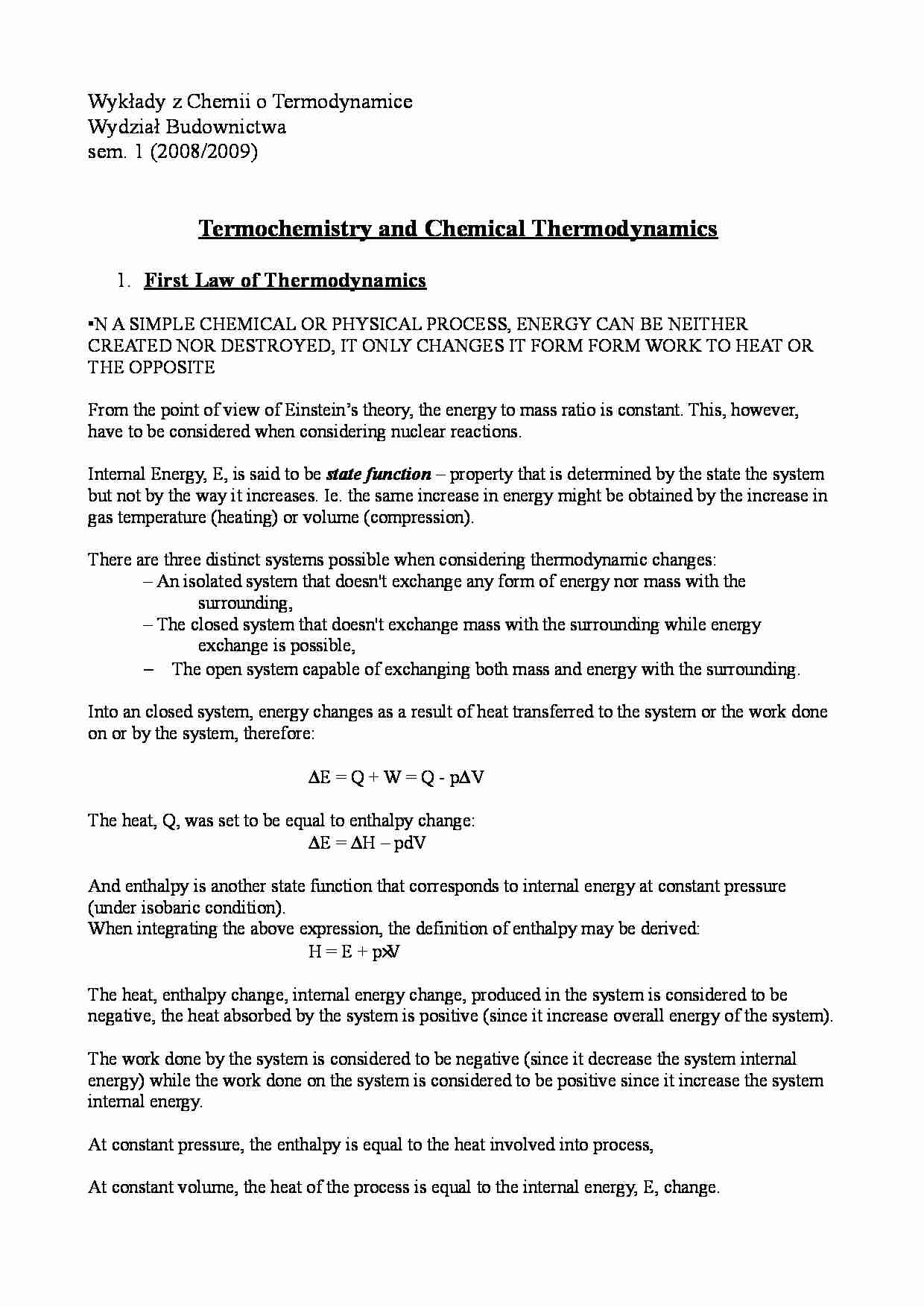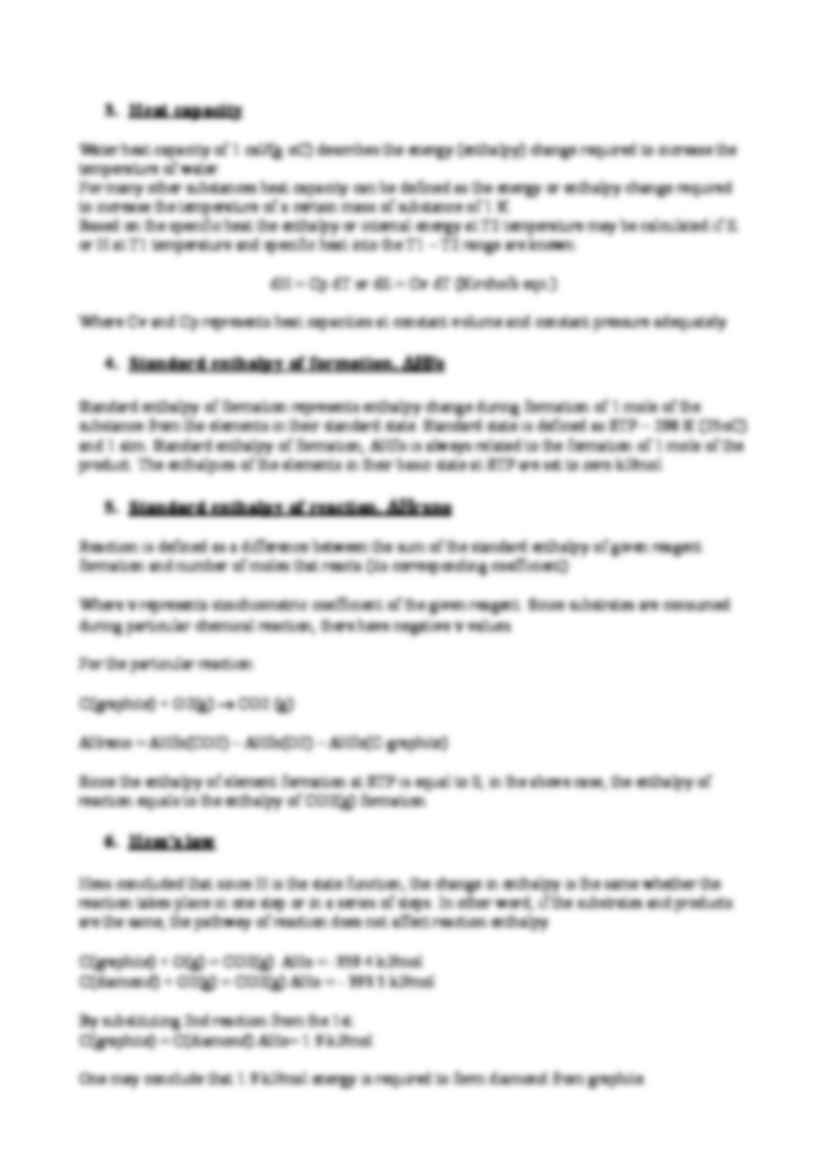To tylko jedna z 11 stron tej notatki. Zaloguj się aby zobaczyć ten dokument.
Zobacz
całą notatkę



Cała praca jest w języku angielskim, obejmuje takie zagadnienia jak: pierwsze prawo termodynamiki, pojemność cieplna, standardowe entalpie, prawo Hess'a, pojemność cieplna i entalpia w niestandardowych warunkach, entropia, drugie prawo termodynamiki, entalpia swobodna Gibbsa oraz równowaga chemiczna. Praca zawiera dużo pomocnych rysunków, wzorów oraz wykresów. Wszystko jest czytelne.
> < > < < > < >
(…)
… of 1 mole of the
product. The enthalpies of the elements in their basic state at STP are set to zero kJ/mol.
5. Standard enthalpy of reaction, ∆Ηrxno
Reaction is defined as a difference between the sum of the standard enthalpy of given reagent
formation and number of moles that reacts (its corresponding coefficient):
Where ν represents stoichiometric coefficient of the given reagent. Since…
…,
by increasing molecules kinetic energy (by increasing system disorder), the entropy at lowest
possible temperature (absolute zero) was assumed to be the lowest and equal to 0 (Third law of
thermodynamics).
Thus the absolute entropy is always positive.
From chemistry point of view entropy changes with both temperature increase and phase change.
When phases change, the entropy increase if the state of the matter changes from more to less
condensed:
S Solid → liquid → gas → plasma
Universe = system + surroundings
Second law of thermodynamics:
ENTROPHY OF UNIVERSE INCREASES IN A SPONTANEOUS PROCESS OR REMAINS
UNCHANGED IN AN EQUILIBRIUM PROCESS
Spontaneous process (∆Suniv. >0) – a process like chemical reaction that does occur under given
condition
Equilibrium process (∆Suniv = 0) – the process during which no macroscopic change to the system
happened. In most cases this is a so-called dynamic equilibrium, meaning there are two: straight and
forward processes that occur at the same rate. Therefore no macroscopic change to the system is
observed.
Non-spontaneous process (∆Suniv <0) – the process that doesn’t occur under given conditions.
Moreover, the opposite process is spontaneous.
Entropy of the system…
... zobacz całą notatkę






Komentarze użytkowników (0)